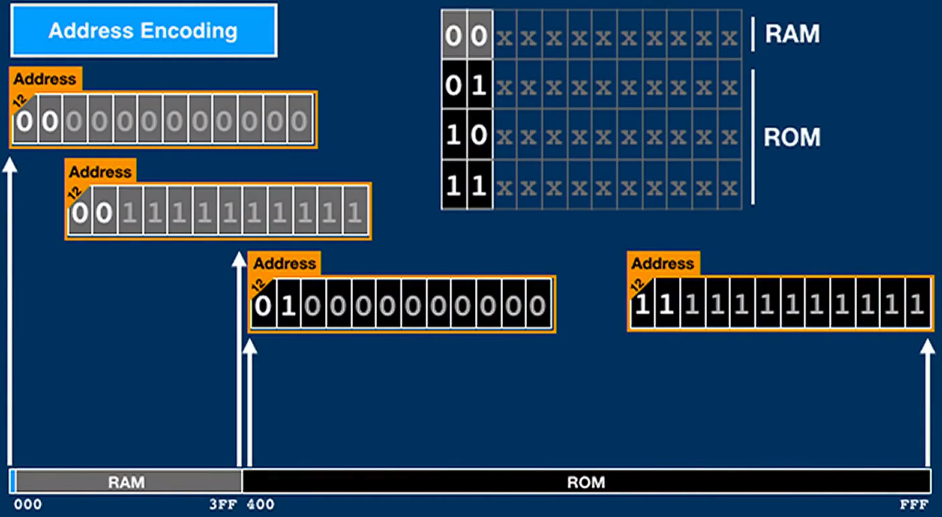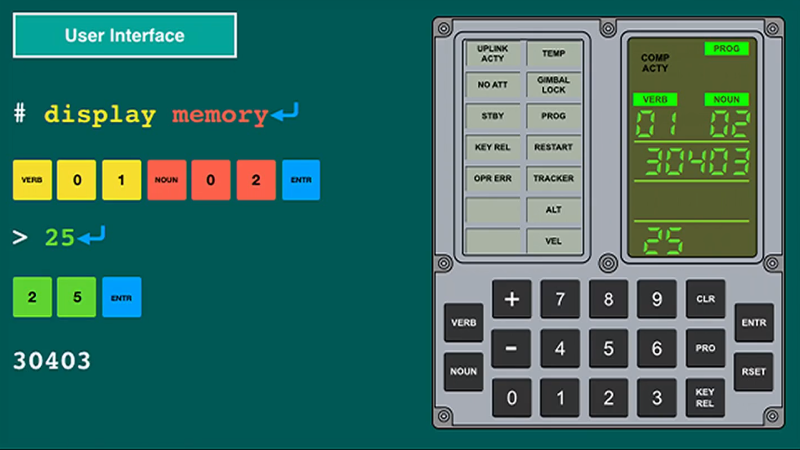While it might not be as exciting as the Saturn V rocket itself, the Apollo Guidance Computer (AGC) was one of the most important developments of the entire Apollo program. While comically underwhelming compared to modern hardware, the AGC was nothing short of revolutionary when it was developed in the 1960’s. Before the AGC, the smallest computers were about the size of a refrigerator and consumed hundreds of watts; both big problems if you’re trying to pack them into a relatively tiny space capsule with limited resources. Not only did the AGC get humanity to the Moon and back, but it also redefined the state of the art for microcomputers, paving the way for the desktop systems of the 1970’s.
That said, the design and operation of the AGC is downright bizarre to modern eyes; it comes from a time of limitations we can hardly fathom. With this in mind, [Michael Steil] and [Christian Hessmann] put together “The Ultimate Apollo Guidance Computer Talk” for 34C3.
This hour-long presentation walks viewers through every aspect of not only the AGC itself, but how it interacted with the Saturn V rocket and the overall lunar mission. Even if you aren’t enough of a vintage computing aficionado to appreciate the complexities of core rope memory, the presentation gives a fascinating look at the gritty details of one of humanity’s greatest achievements.
 Though very slick and easy to understand graphics, [Michael] and [Christian] break down the alien world of the AGC. Even if a lot of this part of the presentation goes over your head, just listen for the sounds of laughter or applause from the audience: that’s when you’re looking at something really off-the-wall.
Though very slick and easy to understand graphics, [Michael] and [Christian] break down the alien world of the AGC. Even if a lot of this part of the presentation goes over your head, just listen for the sounds of laughter or applause from the audience: that’s when you’re looking at something really off-the-wall.
Of particular note during this presentation is the explanation of how the astronauts actually interacted with the AGC. The AGC’s display and keyboard (referred to as DSKY) may seem rather obtuse even to those who used to hack on a VT100, but [Michael] and [Christian] explain how it’s not quite as complex as it seems. Comparing the input and output of the DSKY with what we would see on a more contemporary command line interface, the presentation makes the case that it’s actually a very straightforward way of talking to the computer.
There’s also a complete breakdown of the different phases of the Apollo mission from launch to landing, explaining what the AGC would be doing at any given time. The DSKY is overlaid on actual footage from the Apollo missions, giving a unique perspective as to what the astronauts would see on their computer during iconic moments such as stage separation or lunar touchdown.
If this presentation has you hungry for more Apollo-era computer technology, we’ve covered plenty of projects to keep you occupied. From building a replica DSKY to leisurely paging through the printed version of the AGC’s source code.
















Fran at Franlab on youtube has a project with the smithsonian to refurbish this computer. There is a Go-fund-me page to raise funds to remake the DSKY display. Her latest update was another company has stolen her research and making sub-quality knock off apollo computers and selling them on ebay.
https://m.youtube.com/watch?v=F4IJ5NJzJgg
It should be mentioned the people behind the “knock off” Apollo computers have another story. According to them, their efforts are independent. They’re both working off a common design, so them being very similar seems inevitable. They also offered photos so people could look at the time stamps themselves. Either they went all in and decided to lie through their teeth, or it’s just an unfortunate case of misunderstanding. Considering the lack of a smoking gun, I’m leaning towards the latter.
https://twitter.com/contourcorsets/status/898542414469660672
The “knockoff” is made from 3D printed plastic, a fully realistic replica would cost upwards of $2k just on all the machining and custom display.
Nowhere does it say that it’s perfectly accurate (in fact it mentions that not everything is on par with the original), which would definitely be possible had they actually stolen Fran’s research.
So…what’s wrong with making a more affordable version?
p.s. wtf does Trump have to do with this? (not from US, so legitimately asking)
I don’t know. I see the matter the same way you do. Both works were derived from the same original, with the people selling the replicas coming up with a somewhat affordable replica. That inevitably means sacrificing absolute accuracy. I don’t think I’ve seen anything that indicates the replicas being sold are actually derived from the work Fran did. Don’t get me wrong, I think she’s doing a great job. But one DSKY is generally going to look like another DSKY.
although I have no irons in this fire myself, I believe the “theft” was disccused thoroughly here in hackaday and disproven. so I’m not sure why you feel the need to bring that up again. Or did I miss something?
It seems like Fran is making her research on the DSKY freely available, so I’m not sure how it constitute’s theft to use that data. Unless they are refusing to credit her perhaps?
To take it to the next level, this is hardware that was created with taxpayer money so it really belongs to US citizens to begin with. So not sure how she could claim any kind of ownership of the data to begin with really.
Re Theft: for instance, NOAA charts are govt and don’t have a copyright on them, but I can take that info and put a border on it and publish the derivative product that now has my copyright on it. So if Fran dug the info out of the govt archives and made it understandable, sorted it formatted if better or whatever she would have copyright on it f she wanted. Even items published and made freely available and published under different Creative Commons versions come with terms of usage, a common one is cite and link back to the original article, some have limits on the number of words or percentage of the original that can be published.
So Fran could claim copyright on her work product even if she is making it freely available.
Its amazing to think how far ahead of its time the AGC was. And to think that the team programming the software for this was lead by a woman (Margaret Hamilton).
I’ve always wanted a replica DSKY on my desk, but it’s like the ultimate “I don’t know why, but I want it” thing.
The explanation of how the astronauts interacted with it (verb/noun) is the clearest I’ve ever seen it though. So at least I could say I more or less understood its operation if I ever get a chance to buy/build a clone.
A desktop replica would be nice, but I’m leaning more towards a DSKY watch. That DSKY panel is the right proportions for a nice watch face (ignore the thickness) and the buttons could be activated by a small stylus. I haven’t scaled any image to that size myself but I reckon all buttons and digits ought to fit, and still be readable.
I am not sure if there is a Pnn ‘time of day’ program for normal but pretty sure there is an elapsed mission time for a stopwatch mode.
?there’s replicas? hmmm.
People who are interested should listen to the omegataupodcast.net hes got at least 10 hours on the technical aspects of specifically the Apollo program including 2. 5 hrs on the software of the guidance computer
Its amazing how this computer’s design can still be seen in chips we use today. (Some good and some bad) Like the bank-switching of some present day PICs (and apples and coco’s and other early home computers) to the ‘port’ instructions of the earlier x86 units. I find it so ironic that there is an argument (above) over who copied who’s replica, when some the very basics of the computers and microcontrollers we all use today copy parts of the guidance computer. In the infamous words of Rodney King, “cant we all just get along?” — and lets not bash capitalism too hard, beacuse if it were not for the likes of greedy capitalists like Jobbs or Gates, likeley the only folks with computers would be government scientists and the military.
Its design looks similar to original Microchip PIC. Are there any family ties?